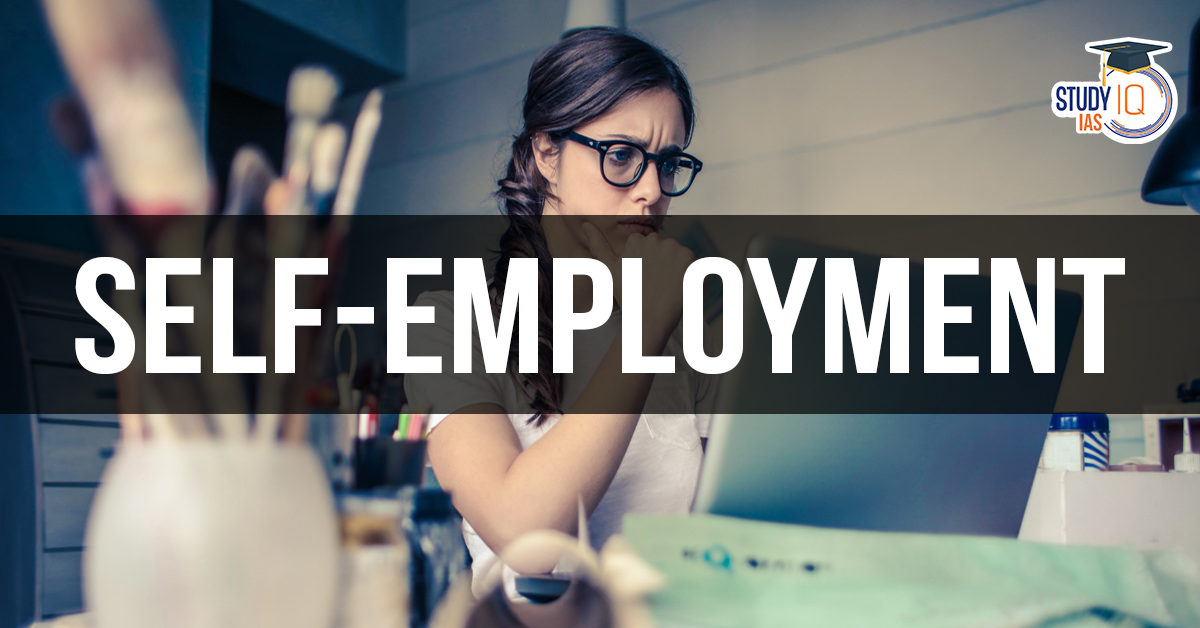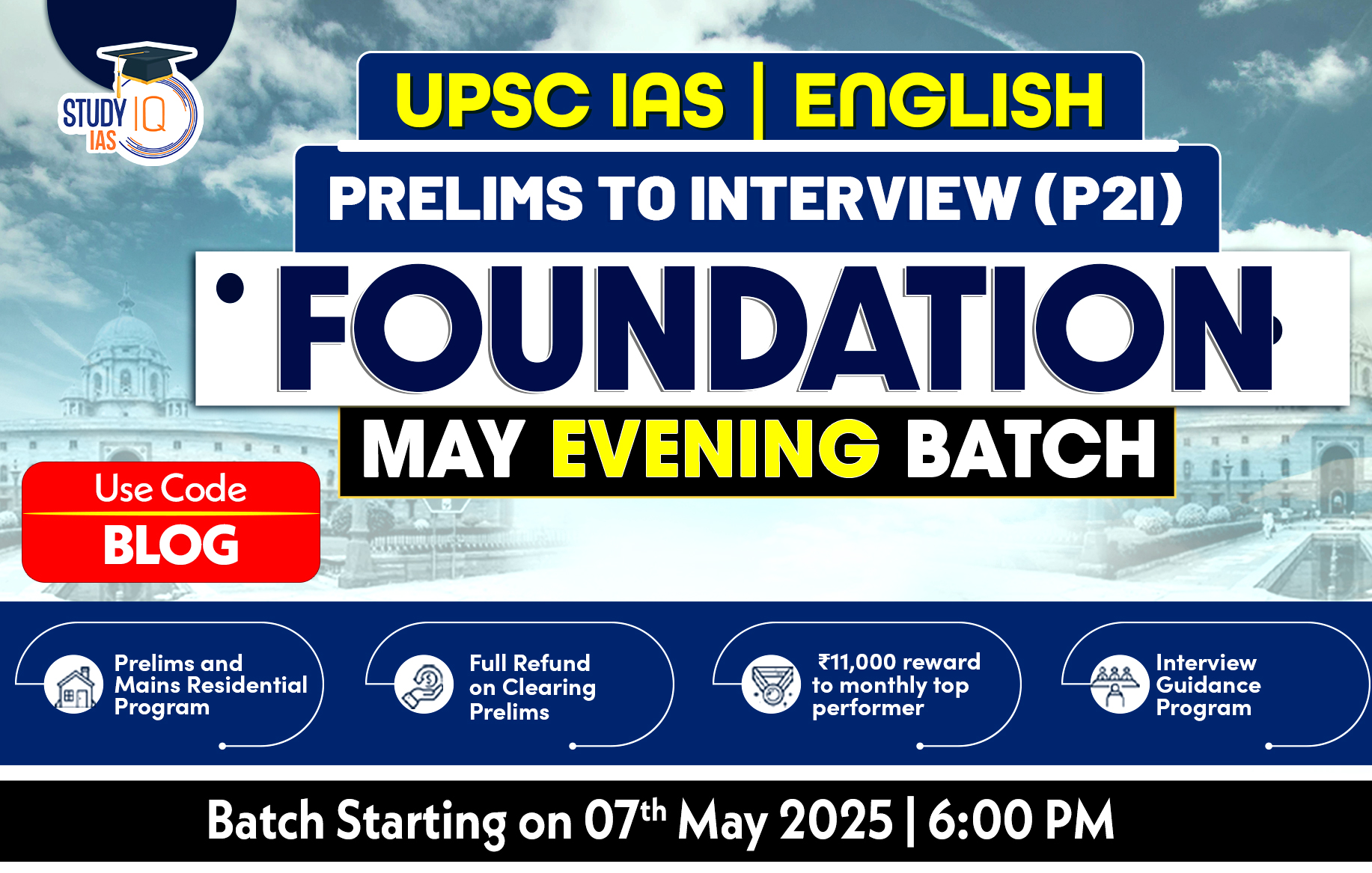Table of Contents
Key Characteristics of India’s Labour Force
- Low Participation and Stagnant Structure: India has a low rate of workforce participation among the working-age population.
- The structure of labour force participation has remained largely unchanged for decades.
- High Self-Employment Rates: India has a higher proportion of self-employed workers and a smaller share of wage and salaried workers compared to other middle-income economies.
- Over 50% of the working population is self-employed:
- Rural Areas: Approximately 60% self-employed.
- Urban Areas: About 40% self-employed.
- There has been an increase in self-employment between 2017-18 and 2023-24, particularly in rural areas and among women.
- Over 50% of the working population is self-employed:
- Gender Disparity in Self-Employment:
- Men: Predominantly own-account workers (running their enterprises).
- Women: Largely “helpers in household enterprises”.
- While the gender gap in own-account workers has narrowed between 2017-18 and 2023-24, the proportion of women working as “helpers” has increased.
Implications of High Self-Employment
- Work Quality and Productivity Issues: High self-employment levels indicate poor work quality and low productivity, especially in rural areas.
- Self-employment is often a fall-back option due to the lack of better opportunities.
- Informality and Lack of Security: Self-employed workers lack formal job benefits such as:
- Social security coverage
- Paid annual or sick leave
- Written employment contracts
- This results in increased informality of work.
- Low Earnings and Underemployment
- Self-employed earnings are barely above casual labour levels.
- The gender earnings gap has widened between 2017-18 and 2023-24, particularly in rural areas.
- Zero earnings: Almost all self-employed helpers report zero earnings, regardless of gender.
- Self-employed women often work less than 40 hours per week, leading to underemployment.
Constraints to Improving Self-Employment Quality
- Education and Skills Deficiency
- Low Education Levels: In 2017-18, only 17% of self-employed workers had completed Grade XII or higher, which marginally increased to 6% in 2023-24.
- For self-employed women:
- 2017-18: 9% completed high school or beyond.
- 2023-24: Increased to only 4%.
- Vocational Training:
- Abysmally low: Only 3% of all self-employed had any formal or vocational training.
- This gap limits their ability to enhance their skills and improve their work quality.
- Abysmally low: Only 3% of all self-employed had any formal or vocational training.
- For self-employed women:
- Low Education Levels: In 2017-18, only 17% of self-employed workers had completed Grade XII or higher, which marginally increased to 6% in 2023-24.
- Limited Access to Formal Credit
- Limited Credit Access: Many self-employed workers lack access to formal credit markets, which restricts their ability to expand their businesses.
- Approximately 41% of unincorporated non-agricultural establishments operate on a small scale within household premises.
- Limited credit increases borrowing costs and reduces loan size, constraining the growth of enterprises.
- Impact on Productivity: Own Account Establishments (OAEs) have significantly lower productivity (₹1 lakh per worker) compared to Hired Worker Establishments (HWEs) (₹2 lakhs per worker).
- Limited Credit Access: Many self-employed workers lack access to formal credit markets, which restricts their ability to expand their businesses.
- Administrative and Legal Challenges
- Complex Legal Processes: Starting formal enterprises remains challenging due to bureaucratic hurdles.
- Entrepreneurs are often forced to rely on family-managed firms, inhibiting growth.
- Impact of Poor Court Efficiency: Court inefficiency hampers contract enforcement and lowers productivity.
- Disproportionate negative effects on SC-ST entrepreneurs.
- Affects the ability of enterprises to expand and generate employment.
- Example of Impact: The difference in professional management accounts for 11% of the per capita income gap between India and the US.
- Complex Legal Processes: Starting formal enterprises remains challenging due to bureaucratic hurdles.
Solutions for Enhancing Self-Employment Quality
- Vocational Training and Education: Expanding vocational training and linking it with entrepreneurship opportunities.
- Facilitating credit access for ITI graduates under schemes like PM Mudra Yojana.
- Access to Formal Credit: Improving access to formal credit markets to expand self-employment and enterprise size.
- Administrative and Legal Reforms: Simplifying the process of starting and managing formal enterprises.
- Enhancing the efficiency of courts to improve contract enforcement and reduce friction in business operations.


 Cabinet Committee on Political Affairs (...
Cabinet Committee on Political Affairs (...
 World Press Freedom Day 2025, Theme, His...
World Press Freedom Day 2025, Theme, His...
 WAVES Summit 2025: India’s Biggest Ent...
WAVES Summit 2025: India’s Biggest Ent...





















